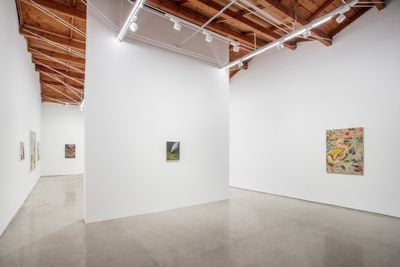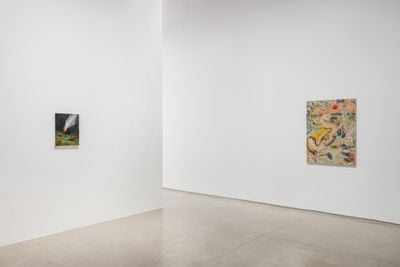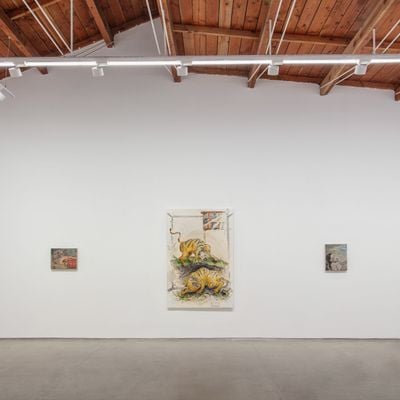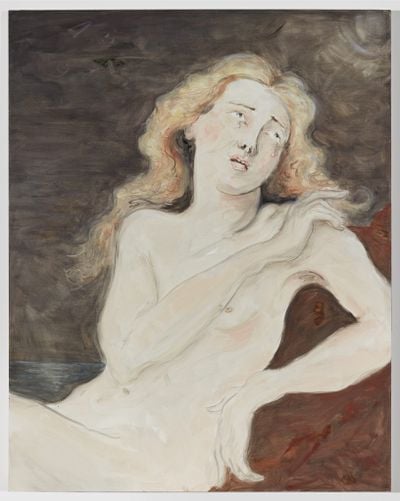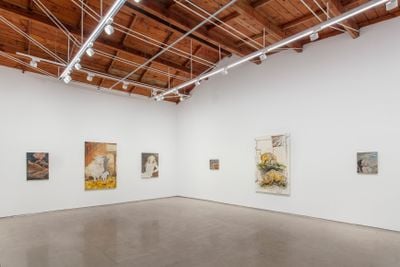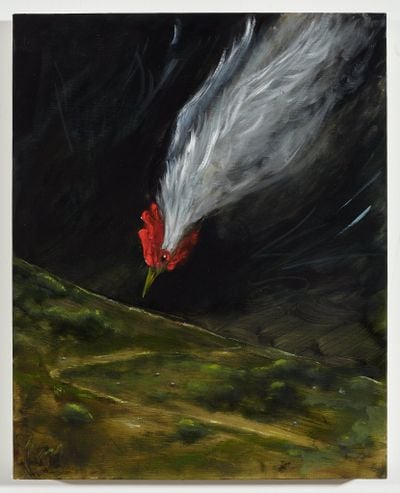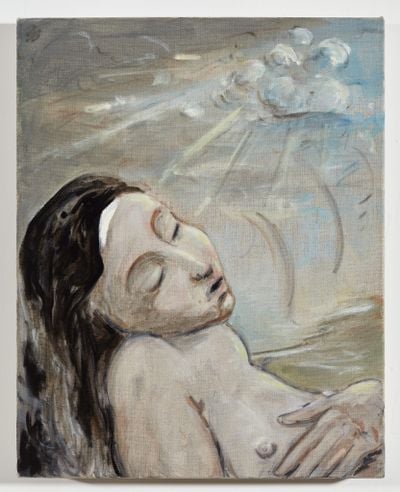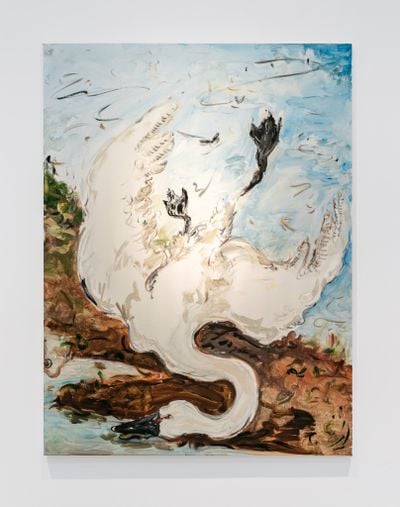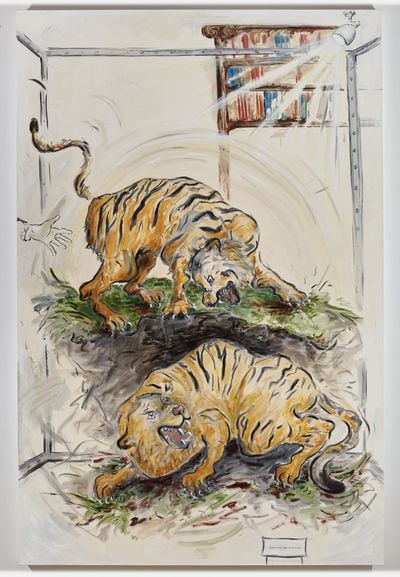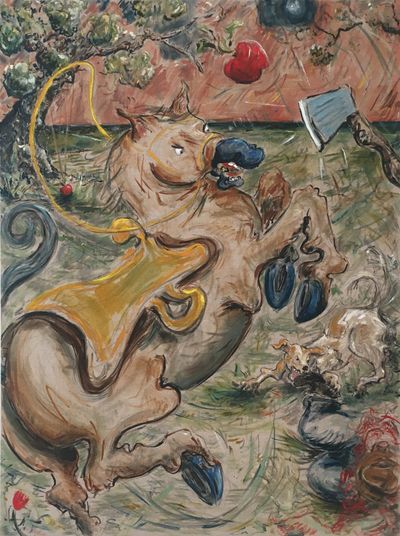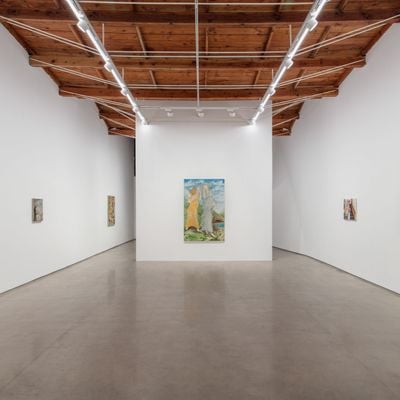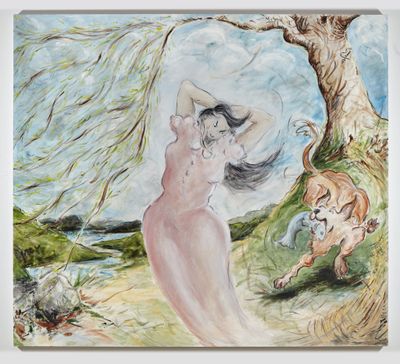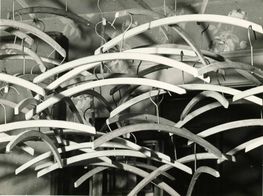Tanya Merrill Introduces the Stories She Paints
Tanya Merrill. Photo: © Justin Craun.
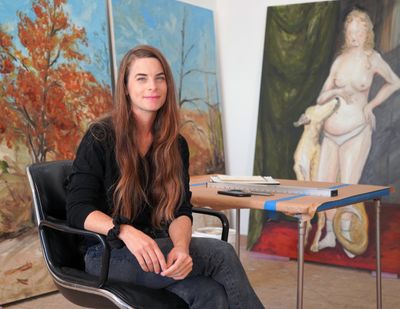
Tanya Merrill. Photo: © Justin Craun.
An American figurative painter with strong interests in environmental issues, art history, and storytelling, Tanya Merrill makes paintings and drawings with subjects that are rooted in our cultural past yet metaphorically address contemporary concerns.
A native New Yorker and the only child of creative parents, Merrill grew up going to galleries and museums and discussing art with family and friends. She studied creative writing and visual arts at Sarah Lawrence College, just north of the city, and began to consider a future in the arts after a year of studying Renaissance art and Italian cinema in Florence in her junior year.
Upon graduating in 2009, Merrill worked at the Dumbo Arts Center in Brooklyn and the San Francisco Museum of Modern Art while also contributing to the art and fashion print publication Riot of Perfume and finding her way with painting. After doing a summer programme at Columbia University School of the Arts in New York in 2015, Gregory Amenoff—an exhibiting artist, professor, and head of the painting concentration at the School of the Arts—encouraged her to apply for graduate studies at the university, which she did.
Studying at Columbia with Amenoff, Jon Kessler, and Rirkrit Tiravanija, Merrill started gaining traction with her figurative, oil on linen paintings after exhibiting in the school's First Year MFA Exhibition. She showed work in a group exhibition at Thierry Goldberg Gallery and Half Gallery's booths at NADA Miami and the Dallas Art Fair before getting her MFA in 2018, followed by further group presentations at Almine Rech, Gagosian, Clearing, Blum & Poe, and 303 Gallery in the three years that followed.
Merrill's big break came in 2020 when she had her first solo show, titled Woman Laughing Alone in the Woods at Night at Half Gallery in New York (29 February–28 March 2021), but the show was cut short because of the Covid-19 lockdown in March. Several of the paintings that were exhibited in the sold-out show were featured in the artist's first institutional exhibition at Pond Society in Shanghai (7 July–30 August 2021), where 12 poetic paintings from the past four years were on view. The presentation preceded her first solo exhibition with 303 Gallery in New York (6 November–18 December 2021), where a whole new body of work will chronicle the destruction of the natural world.
Ocula Magazine contributor Paul Laster recently spoke with the artist about the paintings included in her Pond Society show.
PLWas there a model for the figure in your painting Ariadne on the Shore (2021)?
TMNo, the figure is inspired by the woman in Study for Ariadne at Naxos, a painting from 1783 by the Swedish artist Adolf Ulrik Wertmüller, but I altered the pose. Her arm is in a different position to show more of her lower body, and I put her on the shore with the ocean in the background.
A lot of these characters jump from one painting to the next and can potentially mean something different, depending on what's happening in the depicted scene.
But I still see it as a direct reference to Wertmüller's painting. I see the story of Ariadne, who was abandoned on the island of Naxos, as having all of the elements of an adventure tragedy. I was drawn to her tears, which also made me think of Man Ray's surreal photo of the woman with the glass tears.
The tears in my painting are like little jewels on her face. However, for me, the context is really about the relationship to the other paintings on the wall in this Pond Society show. There's Mount Etna exploding on the left; Dolly, the sheep that was the first cloned mammal, in the centre; and then Ariadne.
Even though it references Greek mythology and Wertmüller's painting, Ariadne is now in a completely different setting, where the earth is exploding and animals are being cloned. I brought her into the world of today.
PLWhat was the point of departure for your canvas Cat with Lobster and Snails (2019)?
TMFor that painting, which is part of a series of cat paintings, I was looking at Dutch still-life paintings. In particular, I was looking at Clara Peeters, who is one of the few female, Golden Age, Flemish still-life painters.
There's often a cat in Dutch still-lifes, which is sometimes on the ground, lurking about; but in Peeters' painting, the cat was a little more prominent. I was also thinking about the cat in connection to femininity.
In art history, the cat is more feminine and the dog a little more masculine. Fido is the loyal companion, while the cat gets the sneaky female association—at least that's my interpretation. I wanted to play with that scenario as subject matter, where things aren't quite so still any longer.
PLHow does it relate to the other visual tales that you've told with animals, insects, or sea creatures that are also food?
TMBesides seeing the cat as a female character, I like to portray it as a predator. I like considering the whole food chain—the cycle of predator and prey, with humans being part of it.
A lot of these characters jump from one painting to the next and can potentially mean something different, depending on what's happening in the depicted scene. They take on characterisations that are connected to the real world and my concerns for the environment.
PLIs the painting Dolly (2021) a mother and child story?
TMIt is. The sheep Dolly had multiple offspring that lived fairly healthy lives, considering that they were babies of a clone. Dolly, on the other hand, had a short and more tragic life, with all sorts of health problems.
Even though the scientists said her health problems weren't connected to her being a clone, I can't help but think they were. She had lung problems and horrible arthritis, and was kept indoors because of the paparazzi. At the end of her life, they cloned her again.
There was Dolly, Dotty, and Debbie—her sisters, yet still her. She lived a very sci-fi life—a strange immaculate conception story, with science as the mother.
PLIs your painting High Flying Rooster (2020) a metaphoric tale about a cocky man?
TMI see that painting more as a creation myth. I imagine someone saying, 'So the world started with this rooster that could fly higher than any rooster could ever fly. It flew above the clouds and the stars, and then one day it dove straight into the earth.'
I wanted the rooster to be coming in like an angled nail, so I guess I am also playing with the idea of the rooster as a cock.
PLWhat's the symbolism at play in the painting Mount Etna (2021)?
TMI wanted to convey the angriest, most inside-out expression that the earth could make, and a volcano came to mind. It's a beautiful and terrifying thing at the same time.
I saw Mount Etna erupting while visiting Italy with a friend in 2008. Although we were across the water and perfectly safe, it filled us with fear. We went back to our hostel and planned our departure for Rome. It was a reminder of the power and devastation the earth can have.
PLIs your painting Saint Teresa in Ecstasy (2020) based on a story from the past?
TMNo, it's my interpretation of past paintings of Saint Teresa. I'm playing with the boundary between spiritual ecstasy and sexual ecstasy. It's the first thing that comes to mind when I see those sort of paintings. Even though it's not meant to be a funny painting, it is somewhat fun to see Saint Teresa enjoying her body.
PLIs she also based on Bernini's sculptural interpretation of the saint?
TMYes, as well as the Saint Teresa paintings that I used as references. Her actual story is tragic, but I wanted to turn the tale into one about her personal enjoyment, to give her another form of ecstasy.
PLYour canvas Silk Gloves Playing seems like it's inspired by a movie or novel. What's the source?
TMIt's not necessarily inspired by a movie or a novel, but—in some ways—it could be. I can see that very clearly now. I've made a couple of piano-playing paintings and when I include one in a show, I want it to be the first painting you see when entering the space or seeing a group of paintings together on a wall.
I think of it as a musical prelude. The three works that are grouped together are Silk Gloves Playing (2021), Woman with Dog (2020), and Swan on the Shore (2020). I wanted a painting that would metaphorically provide a soundtrack to the two paintings that followed. I wanted to provide an imagined audio experience, coming from the piano, which the viewer could consider while looking at the other paintings.
PLThe player's beads, which are in motion, imply that she's pounding the keys, but what does the ring on her index finger represent?
TMShe's definitely pounding the keys. She's passionately playing the piano at a party. The ring reveals her social status. I wanted to portray her as a high society woman, but one who is a bit eccentric—an unconventional dresser, who dons a ring over her gloved finger.
In art history, the cat is more feminine and the dog a little more masculine. Fido is the loyal companion, while the cat gets the sneaky female association—at least that's my interpretation. I wanted to play with that scenario as subject matter, where things aren't quite so still any longer.
PLThe subject in your painting Swan on the Shore seems lifeless or wounded, as though it had just hit ground in mid-flight. What's the story you are conveying here?
TMOne of my favorite paintings is The Threatened Swan by the Dutch Golden Age painter Jan Asselyn. It depicts a swan on the shore that's clearly angry, posing as though it's about to attack.
But thinking about that painting and its title in the context of today—thinking about the thousands of animal species that are threatened now, with the fear of falling out of the sky—is what motivated me to make this painting.
PLDoes the painting Tigers on Display (2020) equally address this idea of animals becoming extinct, while also being used for a theatrical attraction?
TMYes, definitely. They're being used as a theatrical attraction while being protected, even though it's humans that bring these animal to the brink of extinction. We place them in cages in order to shed light on their importance.
It's like the naturalist John James Audubon killing thousands of birds so that he could study and paint them, but now his name is used to protect them.
PLIn the canvas Uprising (2018), the horse is rising up against an ax-wielding force. Is it protecting the apple tree and what the apple symbolises?
TMNo one has ever discussed it in that way, but I would have to say yes. It's definitely protecting the apple tree more than the man. Most people think the horse is protecting the man on the ground, as though it's a battle scene. I like the way you put it much better.
To me, it's the horse and the apple tree and the dog that have rebelled against the people on the other side, including the cowboy on the ground and whoever is out of the frame, wielding the ax.
PLAre we talking about the tree of life or apple as the symbol of knowledge and wisdom?
TMI feel like you could say it's all of the above, but I also like the apple as a symbol of the story of Johnny Appleseed, a pioneer who introduced apple trees to large parts of America.
The apple tree wasn't native to America. It was brought by the Europeans, by the colonisers—even though we have the saying 'as American as apple pie.' I wanted this painting to sort of spiral around so that you are looking at each piece of it and are trying to figure out which thing is attacking what.
I wanted it to spiral into itself. You go around and around and follow the horse attacking the man and then there's the ax and then the dog and the apple tree.
PLYou've done other paintings—as you have done with cats—that feature cowboys, right?
TMYes, I've done around ten different cowboy paintings. It's not a tonne, but it's enough to explore the idea in different ways, from different angles and with different intentions for the characterisations. It's a long narrative, a bit of deep rabbit hole that I've gone down.
PLWhat's happening in the painting Woman with Dog?
TMThat canvas came out my interest in late 18th-century portrait painting, when the portraits suddenly started showing the properties of wealthy landowners. I was particularly fascinated with works by Thomas Gainsborough.
Included in his portrayals of ownership, the paintings often feature the landowner's lovely wife and loyal dog. Rather than appearing docile in my picture of ownership, I decided to depict the woman as wild and scary, and the dog, which has a fish in its mouth, as almost equally rambunctious.
PLWe somewhat touched on my last question, but did you specifically make the selection of paintings and arrange them in the exhibition space so that they would tell a story?
TMYes, I chose the paintings that we would take on loan and then planned the installation of those works with my newer ones.
Grouping Mount Etna, Dolly, and Ariadne or beginning with a painting about how the world began and ending with one about a rebellion could never have happened if I hadn't been given the opportunity to put the older works together with new ones, which was absolutely thrilling to do. —[O]



